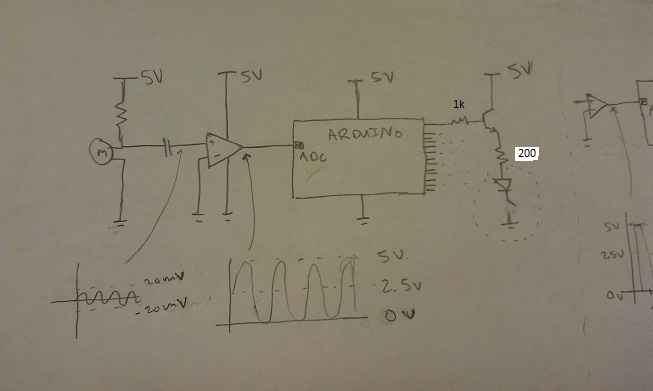I'm getting somewhat strange behavior from the ADC on my arduino, I will try my best to explain. I made a microphone amplifier circuit that gives a peak-to-peak of 0 to 5 V with a DC offset of 2.5 V. This signal is fed into the Arduino ADC. I'm building a VU meter, so based on the ADC reading, some number of lights is turned on.
The circuit in the following condition with the LED ground connections open, as seen here, works fine. The Arduino reads in values like its supposed to picking up any sound into the mic. I verified this by doing a serial print of the values to my computer and also probing the output of the the opamp into an oscilloscope.
 Simplified circuit. (See my first comment to see the full amp circuit).
Simplified circuit. (See my first comment to see the full amp circuit).
The problem arises when I close the LED ground connections as seen in the following picture. Oddly enough, the ADC seems to be giving a square pulse at the instant it samples the signal. I verified this by probing the output of the opamp into an oscilloscope: the graph below the circuit shows what I saw on the oscilloscope. The ADC is reading a value of 1016 (almost 5 V) which turns on all the lights perpetually.
 Simplified circuit. (See my first comment to see the full amp circuit).
Simplified circuit. (See my first comment to see the full amp circuit).
To further complicate things, when I reduce the voltage supply to the entire circuit (including the microcontroller) down to about 3 V, the odd behavior described above does not happen and the VU meter functions perfectly! But at this voltage the lights are too dim and barely visible :(
I have been stuck at this for a long time and have no idea why this is happening.
Any insight or help is appreciated!
